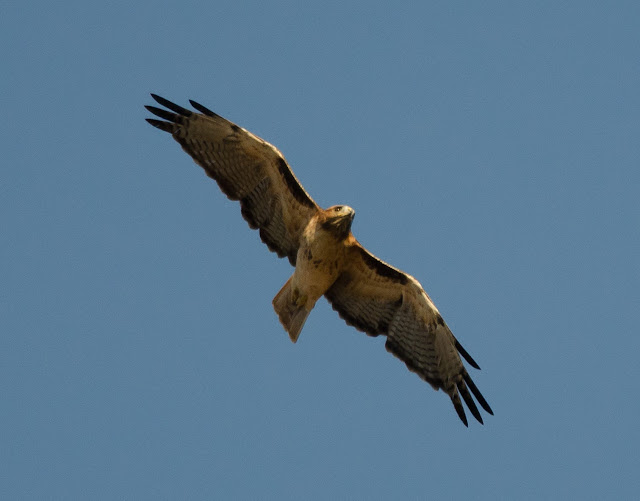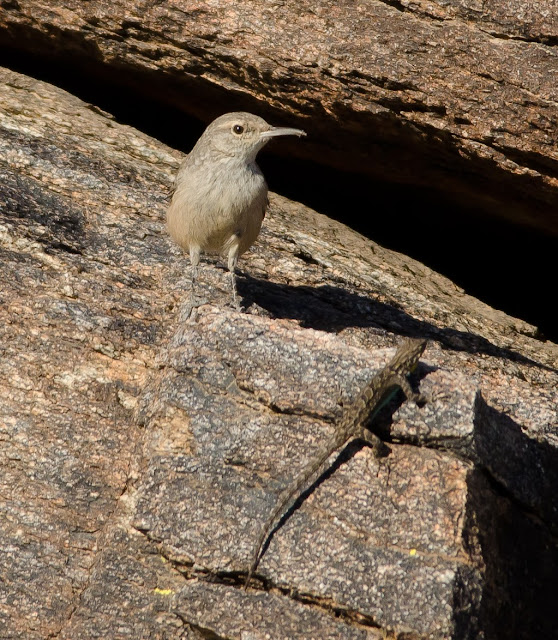Saturday morning I decided to pay one more visit to a couple areas in the west valley; Glendale Recharge Ponds and Tres Rios Wetlands Overflow (permit required). Needed to visit local spots for awhile as I do have an out of state trip planned in the very near future to Half Moon Bay, California, including a pelagic trip. Arriving at the Glendale Recharge Ponds before sun up, and I created quite stir to the local Red-wing Blackbirds in the cattails near the southeast entrance. I counted 70 Canada Geese in Pond 6 while it was still dark. They were so much bigger than anything else out there, that they were easy to count. As I strolled around the ponds checking out every shore bird to see if I could find something new and different, it really dawned on me haw many shore birds were out there in the 4 ponds that held water. It probably numbers in the thousands. While the rare birds could not be found, I did find a Long-billed Dowitcher that has forgotten that it should have molted into its winter plumage like the rest of them. This one really stood out from the rest and was still showing some of that summer rufous coloring.
Long-billed Dowitcher
This location has its share of the Great Blue Heron and I found this one perched on a piling. While it is not what I would call the most natural look, I had the sun behind me and wanted to see how close I could get to try for a decent photo before it flew away. I would take a few steps and snap a couple frames then advance again. But alas, I was not going to get very close as I quickly spotted a lady walking her dog without a leash coming from the opposite direction and she was not slowing down. So this is the best I was able to capture in the early morning light.
Great Blue Heron
When I finally decided to leave this place and head to Tres Rios, from my car on the gravel road out I spied 3 Green-tailed Towhees actively foraging in the grass in the residential area on the south side. Lighting conditions were horrible for photos, but with a little tweaking in Photoshop, I was able to bring out the colors of this wonderful bird. It is very rare that I tweak my photos, but this was one of those occasions that needed it.
Green-tailed Towhee
Tres Rios is not far from Glendale Recharge Ponds and it is much more hospitable for a wider variety of birds. I arrived mid morning and it was starting to warm up, but not nearly as hot as it had been in the past few months. I only spent about an hour there, but had a chance to try shooting some in-flight shots of some of the birds. My targets for these shots were the Osprey and the Belted Kingfisher. Osprey at times can be quite cooperative by soaring the skies fairly close to humans and I have been able to capture photos of them in the past. But this day was a bit better than most. One fly-by by one of these magnificent birds really allowed me to get probably my best in-flight photos of this bird ever.
Osprey
Osprey
Osprey
The Belted Kingfisher has always been a tough bird for me to photograph. Even when they are perched, they are very skittish and usually fly away before I can get close enough to them for photos. On this day, several of them were flying all around, over the ponds and also down by the river. So I decided to try once again at an in-flight photo of one of these beautiful and intriguing birds. I figured I can just delete them all when I start processing them. To my amazement, I actually got one photo that turned out fairly good and with its beak open sounding off with its characteristic rattling call.
Belted Kingfisher
Even though the day was filled with mostly common birds, it was a day well spent learning more about behavior of the many species and coming away with a couple of decent photos as well.
























































